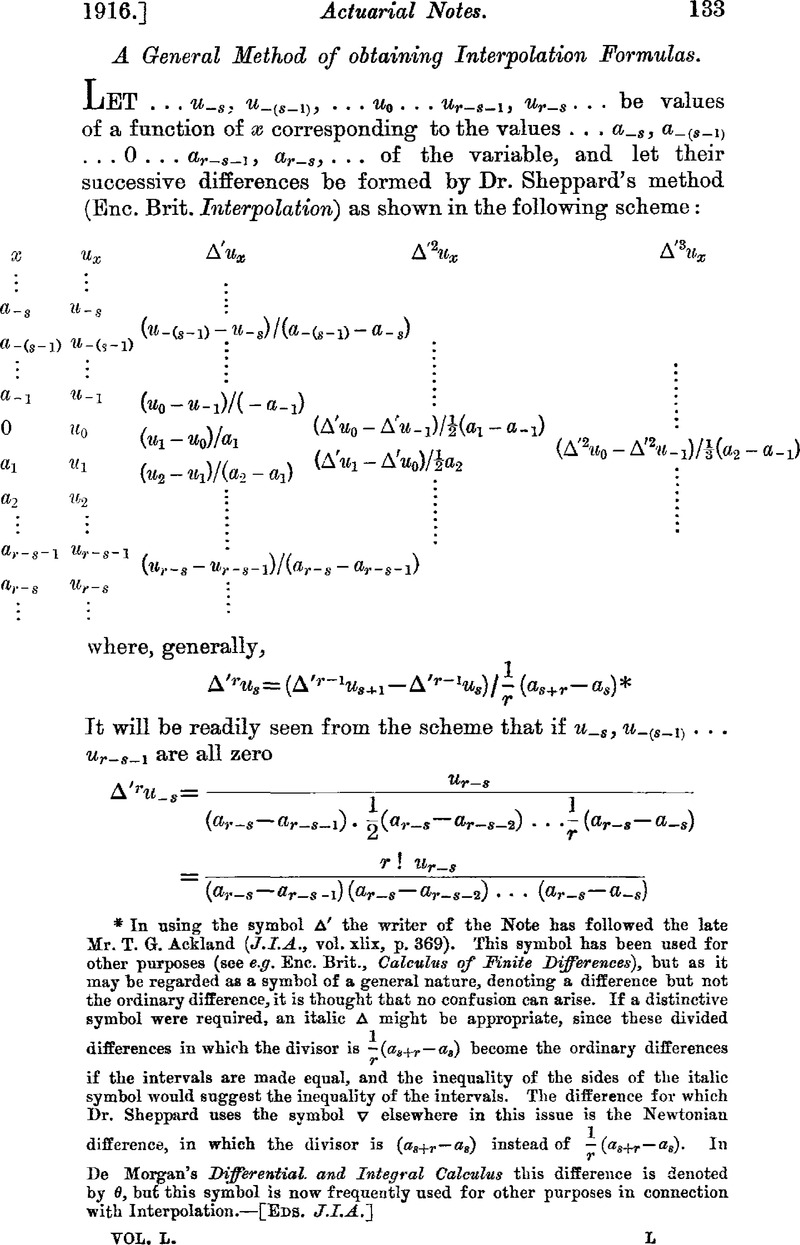No CrossRef data available.
Published online by Cambridge University Press: 18 August 2016

page 133 note *
In using the symbol Δ′ the writer of the Note has followed the late Mr. T. G. Ackland (J.I.A., vol. xlix, p. 369). This symbol has been used for other purposes (see e.g. Enc. Brit., Calculus of Finite Differences), but as it may be regarded as a symbol of a general nature, denoting a difference but not the ordinary difference, it is thought that no confusion can arise. If a distinctive symbol were required, an italic Δ might be appropriate, since these divided differences in which the divisor is ![]() become the ordinary differences if the intervals are made equal, and the inequality of the sides of the italic symbol would suggest the inequality of the intervals. The difference for which Dr. Sheppard uses the symbol ▽ elsewhere in this issue is the Newtonian difference, in which the divisor
become the ordinary differences if the intervals are made equal, and the inequality of the sides of the italic symbol would suggest the inequality of the intervals. The difference for which Dr. Sheppard uses the symbol ▽ elsewhere in this issue is the Newtonian difference, in which the divisor ![]() is instead of
is instead of ![]() In De Morgan's Differential, and Integral Calculus this difference is denoted by θ, but this symbol is now frequently used for other purposes in connection with Interpolation.—[Eds. J.I.A.]
In De Morgan's Differential, and Integral Calculus this difference is denoted by θ, but this symbol is now frequently used for other purposes in connection with Interpolation.—[Eds. J.I.A.]